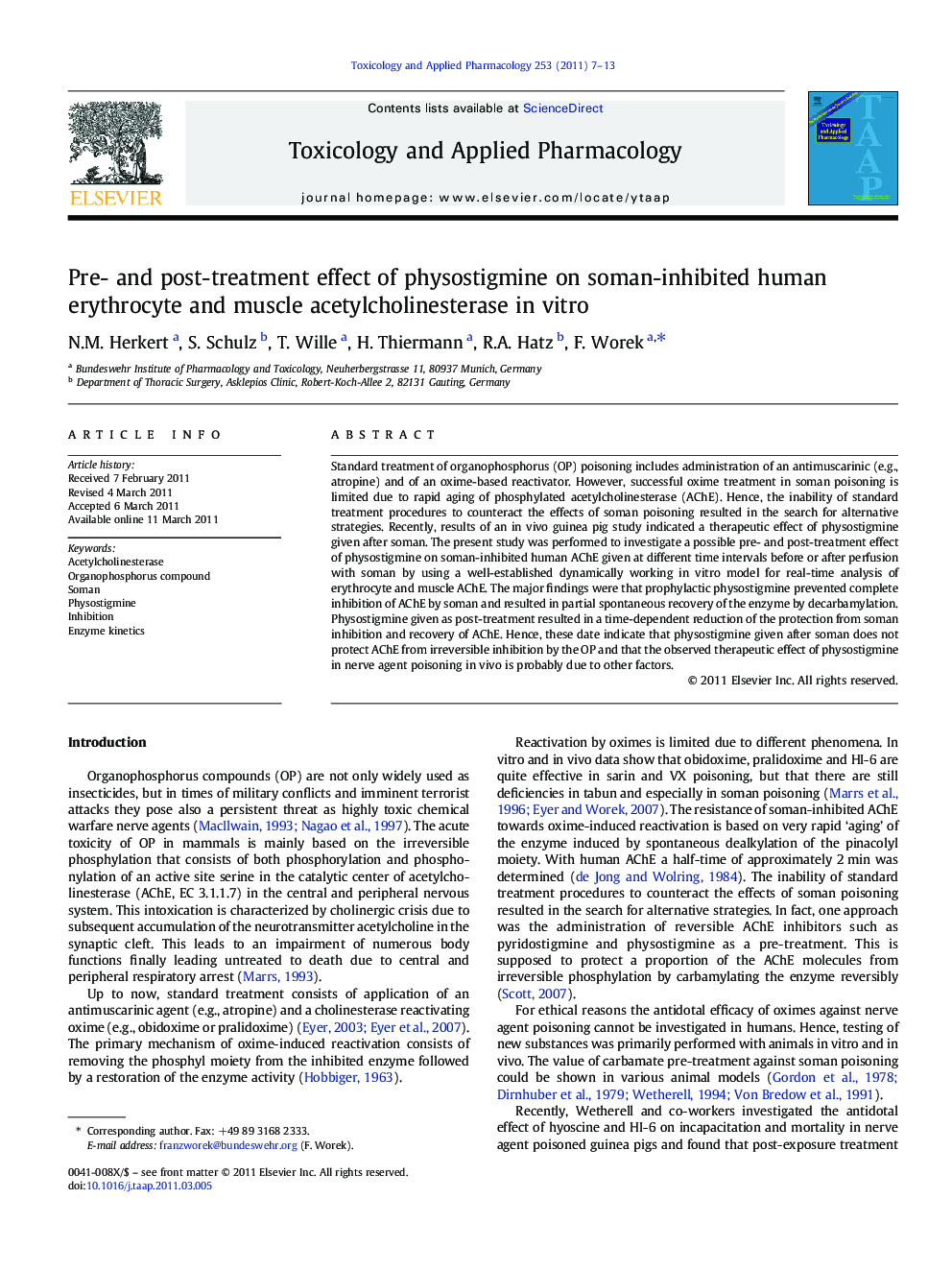| Article ID | Journal | Published Year | Pages | File Type |
|---|---|---|---|---|
| 2569880 | Toxicology and Applied Pharmacology | 2011 | 7 Pages |
Standard treatment of organophosphorus (OP) poisoning includes administration of an antimuscarinic (e.g., atropine) and of an oxime-based reactivator. However, successful oxime treatment in soman poisoning is limited due to rapid aging of phosphylated acetylcholinesterase (AChE). Hence, the inability of standard treatment procedures to counteract the effects of soman poisoning resulted in the search for alternative strategies. Recently, results of an in vivo guinea pig study indicated a therapeutic effect of physostigmine given after soman. The present study was performed to investigate a possible pre- and post-treatment effect of physostigmine on soman-inhibited human AChE given at different time intervals before or after perfusion with soman by using a well-established dynamically working in vitro model for real-time analysis of erythrocyte and muscle AChE. The major findings were that prophylactic physostigmine prevented complete inhibition of AChE by soman and resulted in partial spontaneous recovery of the enzyme by decarbamylation. Physostigmine given as post-treatment resulted in a time-dependent reduction of the protection from soman inhibition and recovery of AChE. Hence, these date indicate that physostigmine given after soman does not protect AChE from irreversible inhibition by the OP and that the observed therapeutic effect of physostigmine in nerve agent poisoning in vivo is probably due to other factors.
